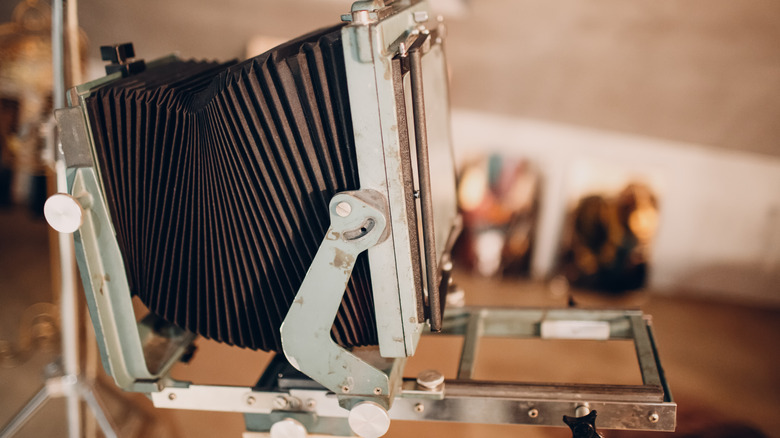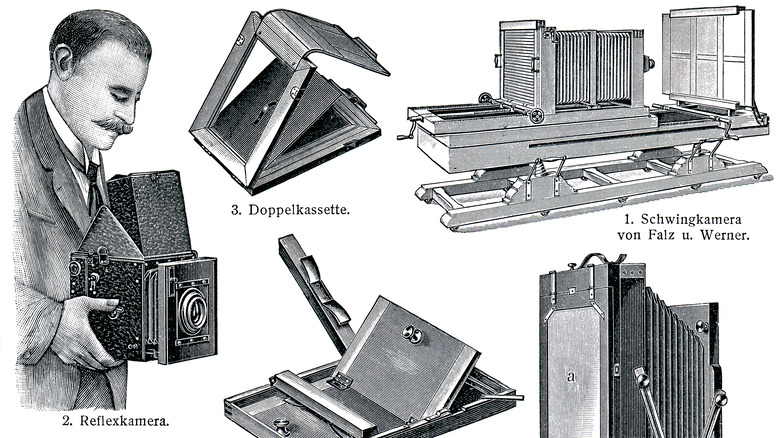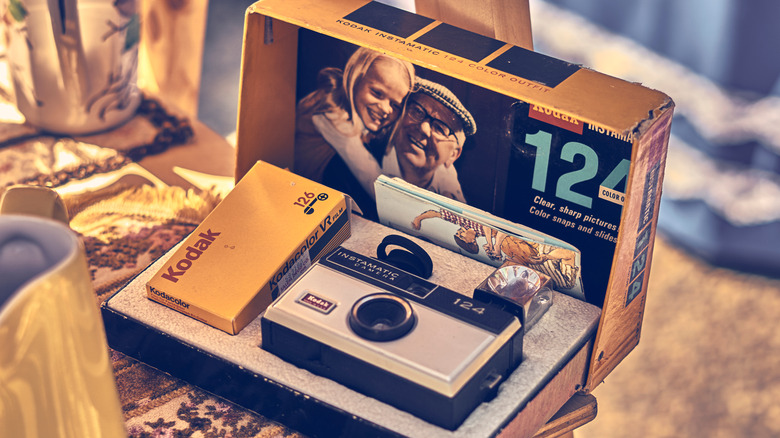When Was The Camera First Invented?
We may receive a commission on purchases made from links.
Even though, according to Pew Research, more than 80% of Americans now own smartphones, it's easy to forget that millions of us have a remarkably high-resolution camera or two in our pocket. Cameras are so fast and convenient that anyone can snap a picture, edit it, and share it with the world in seconds. The technology has become so ubiquitous in the 21st century that many can't imagine life without photography. Of course, that wasn't always the case; cameras were once niche, specialty objects closer to science experiments and fragile art tools than consumer tech. And the very idea of a machine that can capture and replicate what the naked eye sees goes back thousands of years.
The world's artists and inventors have devised many different kinds of cameras throughout history, utilizing light projection, pinholes, mirrors, and even hot mercury for photo development. Before the development of modern 35mm and digital SLR cameras, ancient Chinese and Greek "photographers" used a device known as a camera obscura (via MasterClass). That name was derived from a Latin term meaning "dark chamber," which is where we get the familiar word "camera."
How a camera obscura works
Scientists and engineers today continue to push the capabilities of the camera in new ways, but the basic idea remains the same. A camera takes light through a lens and uses that information to create a photograph—either with light-sensitive paper or with a digital optical sensor. The camera obscura is a barebones implementation of that same concept.
A small opening on the box of the camera obscura accepts light and projects a flipped image onto a flat surface elsewhere. For the likes of Aristotle and Chinese philosopher Mozi, who wrote about the camera obscura in the fifth and fourth centuries BCE, the camera obscura was an ideal device to observe natural phenomena indirectly—like a solar eclipse. However, the actual term "camera obscura" wouldn't come into use until the seventeenth century, when Renaissance artists used the device as an aid in naturalistic drawing and painting. In a couple hundred years, the race would be on for the development of a proper photographic device that could create long-lasting images (via Art Critique).
The invention of the modern camera
The cameras that come standard on today's smartphones are rooted in the rapid advances in photographic technology made in the nineteenth and twentieth centuries. The first camera that could develop photographs was invented in early-19th-century France by Joseph Nicéphore Niépce, who took a photo via his technique of projecting light onto silver chloride paper. Louis Daguerre followed him in the 1820s with his daguerreotype method, which instead used copper plates, iodine, and mercury. Daguerre's laborious photographic technique was nonetheless popular, with enhancements made by other inventors around the world that would right the flipped image and introduce photo paper that developed much faster.
When George Eastman created his easy-to-use Kodak camera in 1888 (which came with 100 exposures!), the consumer camera was born — paving the way for the 35mm, digital, and even mirrorless cameras we know today (via MasterClass).


